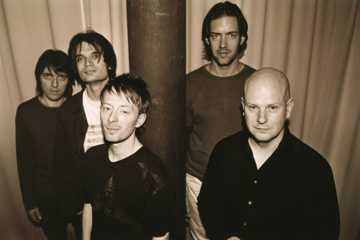Cain And Abel
"Mandatory theatre for anyone troubled or fascinated by the intersection of gender and violence in history and in our world today."

The Rabble's latest offering, Cain And Abel has only sparse dialogue, speaking primarily through bold images of two bodies, blood and scraps of food, flesh and running juices, stark against soon-to-be-stained white sheets. The Rabble are the vanguard of a new breed of theatre-makers that embrace theatre's most unique asset: its ability to attack all senses. Cain And Abel demonstrates how affecting this visceral, sensual, often grotesque form of theatre can be, as its combination of bold design and unwavering performances simultaneously embraces and brutally rejects the sensibilities of a culture built on brotherly love and violence.
Cain And Abel recounts the birth of the violence of man, but through two women (Dana Miltins and Mary Helen Sassman). At first the violence is understated, seen through the sheen of the gently hovering original biblical text, a surprisingly tranquil scene only mildly interrupted by the gurgling of Abel's first death before falling silent again. Outburst and silence. This rhythm repeats as the echoes of the original violence play out: an honour killing, domestic violence, the celebrity spectacle. It is an inherently violent show, but The Rabble are fiercely intelligent theatre makers, and the violence is always one step removed: a chicken carcass stomped next to a quivering face gives the sickening crunch of flesh and bones without the naturalism that can alienate audiences.
Kate Davis and Emma Valente, with designers Meg Wilson and Matilda Woodroofe, crafted the set, lighting and sound design for the production, and the way they harness the space through light, sound and space is simply mesmerising. The limited dialogue given to Miltins and Sassman is a rich, churning swamp of the rhetoric of gendered violence, language that may have taken root thousands of years ago but still permeates our lives today. The blood-letting builds, pulling the audience in, implicating them in the act, but culminates in a perfect, still silence, a stage beautifully divided.
Don't miss a beat with our FREE daily newsletter
This final tableau seems to challenge the production itself, questioning the brutal foundation it rests upon. This is the great strength of The Rabble's work: they create theatre that is so thorough in its inquisition of social and moral norms that the work itself is implicated. Cain And Abel is striking in its juxtaposition of femininity and violence — white slips and steel helmets, glitter lips and baseball bats — but it becomes clear that this contrast is only striking because we've been trained to think it is unnatural. This is an age-old story, but it seems new, brash and radical partly because it is in the hands of women. This is not the feminine violence we are used to seeing; there are no manipulative, sensual temptresses. Miltins and Sassman deliver powerhouse performances, unshakeable and unapologetic and grotesque.
Cain And Abel is a mandatory theatre for anyone troubled or fascinated by the intersection of gender and violence in history and in our world today, or anyone interested in the future of the industry (because this is it). The Rabble's work is full of bold statements, but asks equally bold questions and will not deliver the answers. You'll have to go and find them for yourself.







